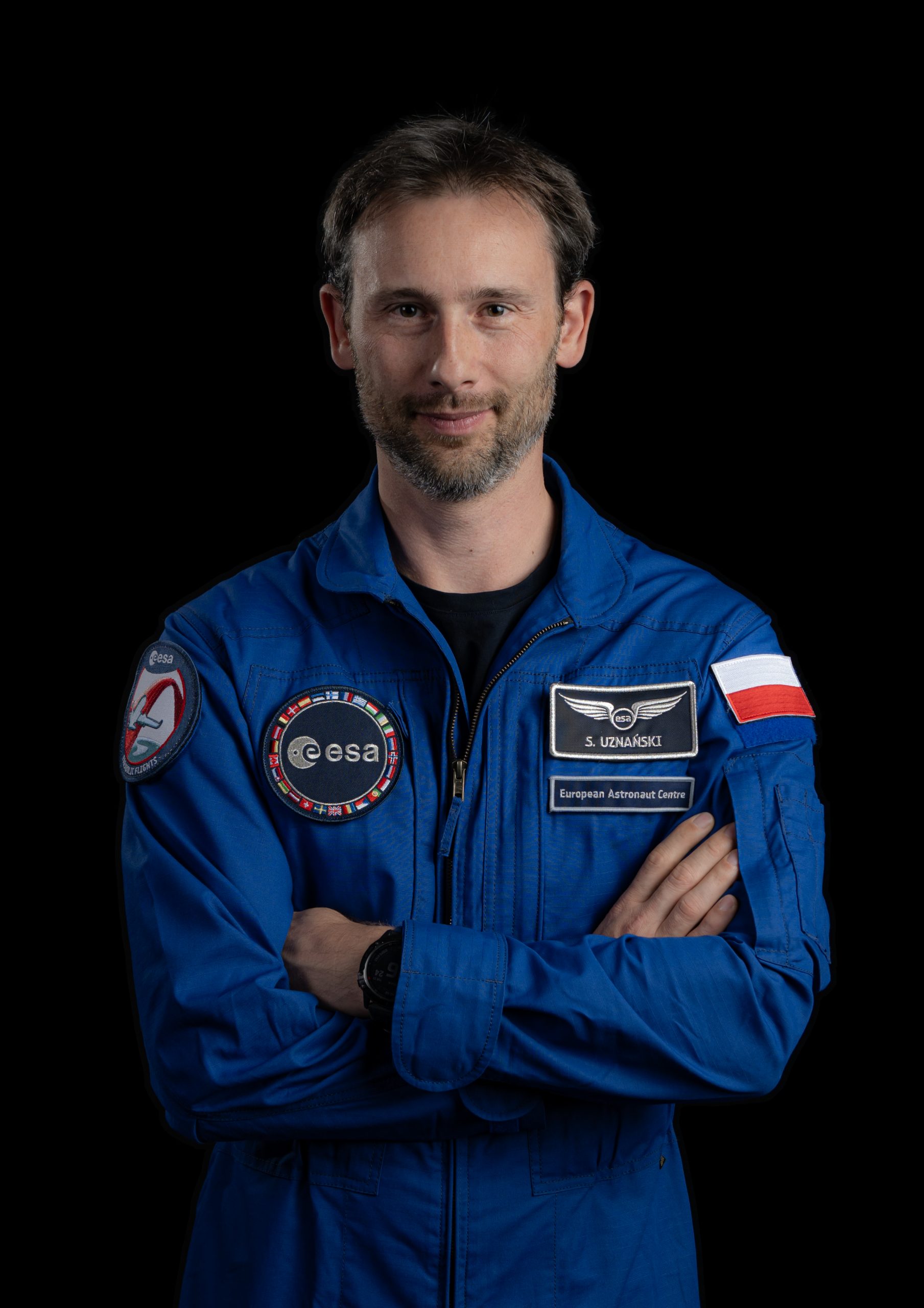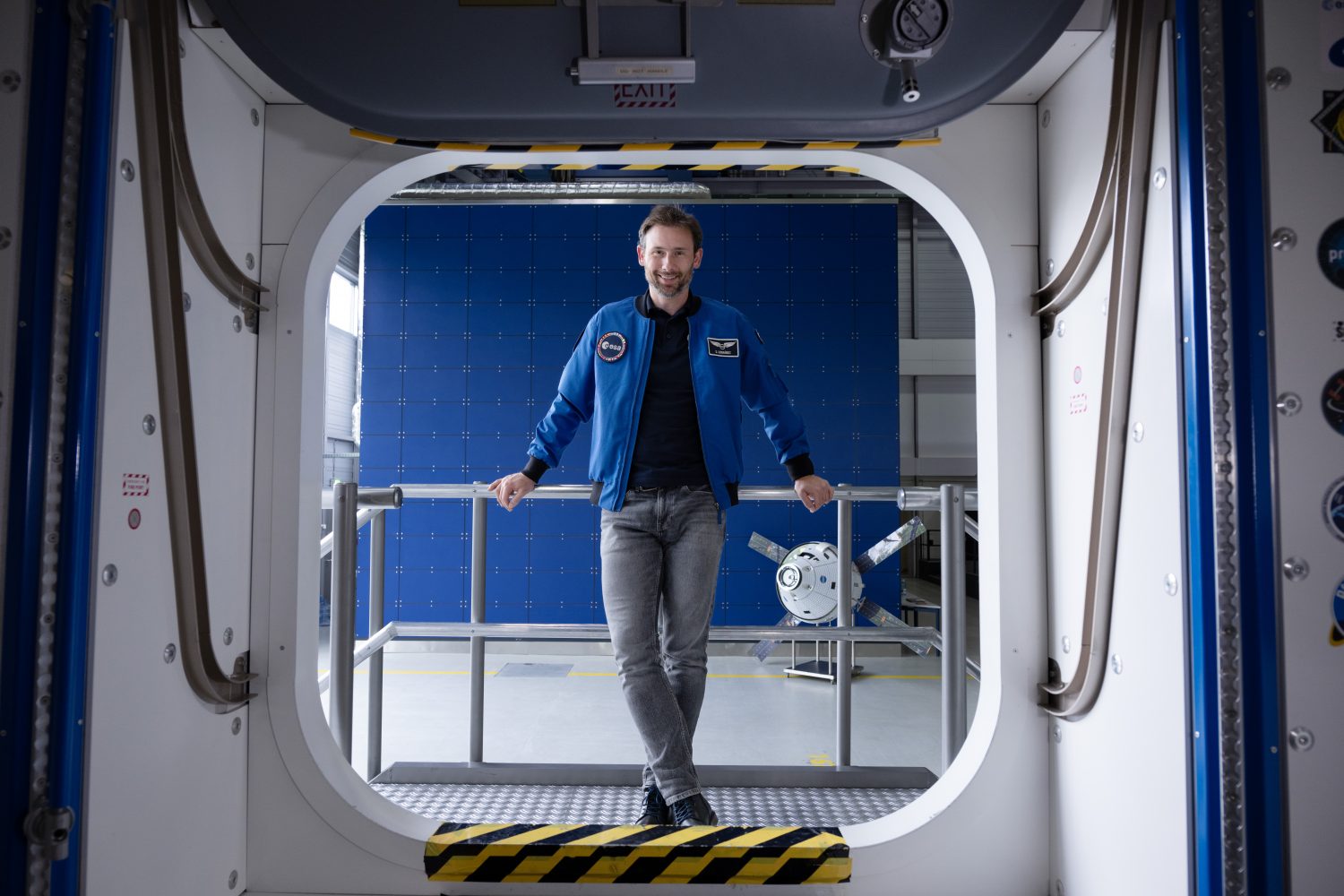
Sławosz Uznański
(English) Ignis mission name and patch
Posted on 2 December 2024 by Laura
Ci spiace, ma questo articolo è disponibile soltanto in English.
Read the article

Sławosz Uznański was selected in November 2022 as a member of the ESA astronaut reserve after a year-long selection process. The 2022 ESA recruitment campaign received over 22 5000 applications from across its Member States. Sławosz was born in Poland in 1984. He joined ESA as a project astronaut on 1 September 2023 for training familiarisation anticipating flying on a future space mission.
During his doctorate, Sławosz worked as a radiation effects engineer at STMicroelectronics focusing on the next European radiation-tolerant and radiation-hardened digital CMOS technologies for space applications in Crolles, France.
In 2011, Sławosz joined the European Organization for Nuclear Research (CERN) in Geneva, Switzerland, working as a reliability expert. His duties included for example leading radiation test campaigns in ESA test facilities to qualify electronics components and systems for space and accelerator use.
In 2013, he was appointed as a project lead and senior reliability engineer at CERN where he was in charge of the creation of a radiation-tolerant power converter control system which has been a core part of the Large Hadron Collider LHC since 2017.
From 2018 to 2020, he was an Engineer in Charge of LHC, being responsible for the day-to-day 24/7 operations of CERN’s largest accelerator and assuring its optimum exploitation.
In 2019, he was serving as a technical expert and evaluator for the EU's research and innovation funding programme Horizon 2020 reviewing European space technologies for the Research Executive Agency (REA) at the European Commission in Brussels, Belgium.
Alongside his professional career, Sławosz’s interests have always been closely related to space applications. He lectured on space system designs for international schools of engineers SERESSA 2014 and 2021 (School on the Effects of Radiation on Embedded Systems for Space Applications) and organised workshops between CERN and NASA as well as workshops for the private sector.
He has authored a book on radiation effects, numerous publications and organised multiple international scientific workshops and lectures. From 2014, he was also an active volunteer reviewing multiple commercial space satellite projects such as the ICEYE constellation as well as Polish space missions like PW-SAT2, HyperSat and EagleEye.
On his days off, Sławosz is outside testing his limits on high-altitude mountaineering expeditions, travelling to remote places or on a sailing boat, enjoying time with friends, sharing his sailing experience or taking part in competitive regattas.
Sławosz graduated with honours with a master's degree from the Technical University of Łódź, Poland, in 2008 and a master's degree from Université de Nantes, France, in 2008. In addition, he received a Diplôme d’Ingénieur from École Polytechnique de l'Université de Nantes, France, in 2008.
In 2011, Sławosz earned his Doctorate in radiation-tolerant designs for space applications from the Université d’Aix-Marseille, France.
Next to his mother tongue Polish, Sławosz also speaks English and French.


Posted on 2 December 2024 by Laura
Ci spiace, ma questo articolo è disponibile soltanto in English.
Read the article

Posted on 12 November 2024 by Laura
(English) In preparation for his upcoming mission with Axiom Space, ESA project astronaut Sławosz Uznański is getting to grips with a first taste of space exploration during the most recent ESA parabolic flight campaign.
Read the article

Posted on 2 August 2024 by Marie Deschamps
Ci spiace, ma questo articolo è disponibile soltanto in English.
Read the article

Posted on 17 July 2024 by Laura
(English) In Episode 10 of this ESA Explores podcast series, we spoke to Sławosz Uznański, an ESA project astronaut from Poland, about his training and preparations for a future mission to space.
Read the article

Posted on 18 September 2023 by Laura
(English) Sławosz Uznański, ESA project astronaut from Poland, gives a “thumbs-up” from the heart of the action inside the Columbus training mockup at ESA's European Astronaut Centre in Cologne, Germany.
Read the article

Posted on 18 September 2023 by Laura
(English) As of 1 September 2023, Sławosz Uznański joined ESA as a project astronaut anticipating flying on a future space mission.
Read the article